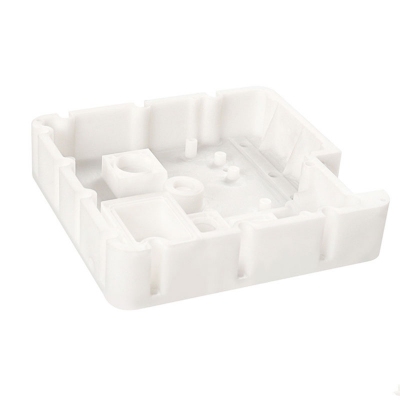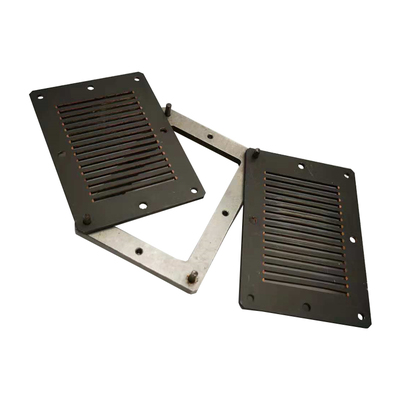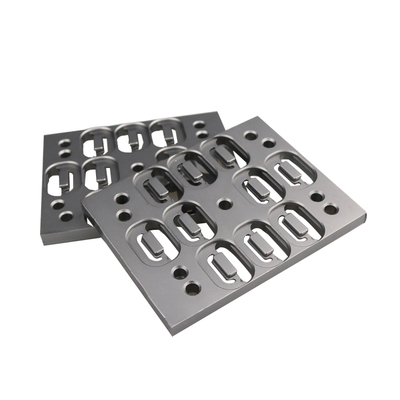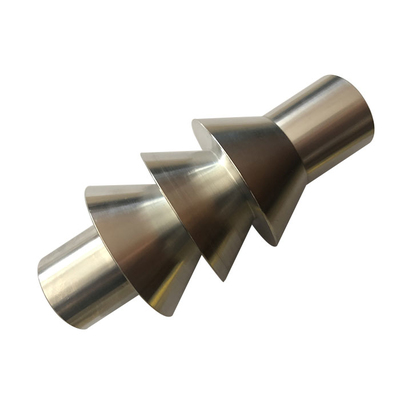High-Performance Numerical Control for High-Speed Machining by Means of Polynomial Trajectories
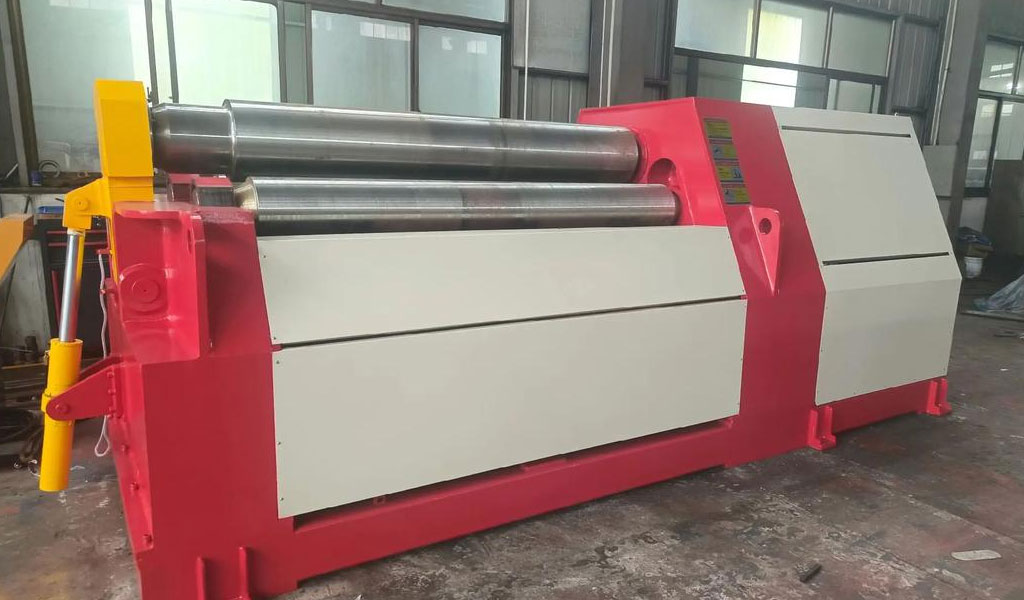
High-speed machining (HSM) represents a pivotal advancement in modern manufacturing, enabling the rapid production of complex parts with high precision and superior surface quality. Central to this technological evolution is the role of numerical control (NC) systems, which govern the motion of machine tools to achieve desired machining outcomes. Among the various strategies employed in HSM, the use of polynomial trajectories has emerged as a highly effective approach for optimizing tool paths, minimizing machining time, and enhancing surface finish. This article explores the principles, methodologies, and applications of high-performance NC systems utilizing polynomial trajectories for HSM, delving into their mathematical foundations, implementation strategies, and comparative advantages over traditional linear and circular interpolation methods. By synthesizing insights from key research and industry practices, this comprehensive analysis aims to provide a thorough understanding of polynomial trajectories in the context of high-performance NC systems, supported by detailed tables for comparative evaluation.
The adoption of polynomial trajectories addresses several limitations inherent in conventional NC tool paths, such as feedrate fluctuations, jerk-induced vibrations, and suboptimal machining times. These trajectories, often derived directly from computer-aided design (CAD) models, leverage polynomial functions—such as cubic, quintic, or Non-Uniform Rational B-Splines (NURBS)—to define smooth, continuous tool paths that respect the kinematic constraints of modern CNC machines. This article will systematically examine the theoretical underpinnings, practical implementations, and performance metrics of polynomial-based NC systems, with a focus on their role in achieving high-speed, high-precision machining.
Historical Context of Numerical Control in Machining
Numerical control has been a cornerstone of manufacturing since the mid-20th century, when the first NC machine tools were developed to automate machining processes. Early NC systems relied on linear and circular interpolation to approximate tool paths, which, while effective for simple geometries, struggled to meet the demands of complex, freeform surfaces required in industries such as aerospace, automotive, and biomedical engineering. The limitations of these early systems—such as discontinuities at segment junctions, excessive feedrate reductions, and vibration-induced surface defects—prompted researchers to explore advanced trajectory generation techniques.
The advent of HSM in the late 20th century necessitated further refinements in NC technology. HSM, characterized by high spindle speeds, rapid feedrates, and precise tool positioning, required tool paths that could maintain smoothness and continuity to avoid exciting the natural frequencies of machine tools. Polynomial trajectories, particularly those based on spline interpolation, emerged as a solution to these challenges. Research in the early 2000s, notably by Lartigue et al. (2004), highlighted the advantages of polynomial surface formats for HSM, demonstrating their ability to balance smoothness, machining time, and surface quality. This section traces the evolution of NC systems, setting the stage for a detailed exploration of polynomial trajectories.
Fundamentals of Polynomial Trajectories
Definition and Mathematical Representation
Polynomial trajectories refer to tool paths defined by polynomial functions, which describe the position, velocity, and acceleration of a tool as it moves through space. Unlike linear or circular interpolation, which approximate complex geometries with discrete segments, polynomial trajectories provide continuous, smooth paths that minimize kinematic discontinuities. The most common polynomial forms used in HSM include:
-
Cubic Splines: Third-degree polynomials that ensure continuity in position and velocity, suitable for applications requiring moderate smoothness.
-
Quintic Splines: Fifth-degree polynomials that provide continuity in position, velocity, and acceleration, ideal for high-speed applications where jerk (the derivative of acceleration) must be controlled.
-
NURBS: Non-Uniform Rational B-Splines, which offer greater flexibility in modeling complex curves and surfaces by incorporating weights and control points.
Mathematically, a polynomial trajectory for a tool path in 3D space can be represented as a parametric curve ( \mathbf{r}(t) = [x(t), y(t), z(t)] ), where each component is a polynomial function of the parameter ( t ). For a cubic spline, the position function for one axis might take the form:
[ x(t) = a_0 + a_1 t + a_2 t^2 + a_3 t^3 ]
where ( a_0, a_1, a_2, a_3 ) are coefficients determined by boundary conditions, such as the starting and ending positions and velocities. For quintic splines, the polynomial extends to the fifth degree to ensure smooth acceleration profiles:
[ x(t) = a_0 + a_1 t + a_2 t^2 + a_3 t^3 + a_4 t^4 + a_5 t^5 ]
NURBS generalize this further by introducing rational functions, defined as:
[ \mathbf{r}(u) = \frac{\sum_{i=0}^n N_{i,k}(u) w_i \mathbf{P}i}{\sum{i=0}^n N_{i,k}(u) w_i} ]
where ( \mathbf{P}i ) are control points, ( w_i ) are weights, and ( N{i,k}(u) ) are B-spline basis functions of degree ( k ).
Advantages of Polynomial Trajectories
Polynomial trajectories offer several advantages over traditional linear and circular interpolation methods:
-
Smoothness: Polynomial trajectories ensure continuity in position, velocity, and acceleration, reducing vibrations and improving surface quality.
-
Reduced Machining Time: By minimizing feedrate fluctuations and avoiding unnecessary decelerations, polynomial trajectories enable higher average feedrates.
-
Compatibility with CAD Models: Polynomial formats, particularly NURBS, can be directly derived from CAD models, streamlining the transition from design to machining.
-
Kinematic Compliance: Polynomial trajectories can be tailored to respect the velocity, acceleration, and jerk limits of CNC machine tools, enhancing dynamic performance.
These advantages make polynomial trajectories particularly well-suited for HSM, where high feedrates and complex geometries demand precise control.
Polynomial Trajectory Generation Techniques
Interpolation Methods
Interpolation is a key technique for generating polynomial trajectories. The goal is to construct a smooth curve that passes through or approximates a set of control points derived from a CAD model. Common interpolation methods include:
-
Cubic Spline Interpolation: Ensures ( C^2 ) continuity (continuous position and velocity) by fitting cubic polynomials between control points. This method is computationally efficient but may exhibit oscillations in high-curvature regions.
-
Quintic Spline Interpolation: Provides ( C^3 ) continuity (continuous position, velocity, and acceleration) by using fifth-degree polynomials. Erkorkmaz and Altintas (2001) developed a quintic spline interpolation algorithm that eliminates feedrate fluctuations by maintaining constant arc displacement at each step.
-
NURBS Interpolation: Offers greater flexibility for complex geometries by using rational B-splines. NURBS interpolation minimizes feedrate fluctuations through adaptive feed correction polynomials, as described by Cheng et al. (2004).
Feedrate Profiling
Feedrate profiling is critical for ensuring that polynomial trajectories respect the kinematic constraints of CNC machines. Traditional linear interpolation often results in feedrate reductions at segment junctions due to tangent discontinuities. Polynomial trajectories address this by imposing limits on the first and second derivatives of feedrate, resulting in trapezoidal or S-curve acceleration profiles. For example, Erkorkmaz and Altintas (2001) proposed a jerk-limited trajectory generation algorithm that uses quintic splines to achieve smooth acceleration profiles, reducing machining time and improving surface finish.
Optimization Strategies
Optimization techniques enhance the performance of polynomial trajectories by minimizing machining time while maintaining smoothness and accuracy. Common approaches include:
-
Linear Programming with Pseudo-Jerk: Zhang and Li (2013) proposed a convex optimization approach that uses a pseudo-jerk (an approximation of the true jerk) to formulate the trajectory planning problem as a linear program, enabling efficient computation of smooth, time-optimal trajectories.
-
Reinforcement Learning: Recent advancements have explored machine learning for trajectory optimization. Heng et al. (2017) developed a neural network-based trajectory smoothing method using reinforcement learning to achieve real-time optimization without iterative computations.
-
Bézier Curve Smoothing: A novel five-axis path-smoothing algorithm uses dual cubic Bézier curves to blend tangent-discontinuous points in linear tool paths, ensuring tangency and curvature continuity.
Implementation in High-Speed Machining
Integration with CNC Systems
Implementing polynomial trajectories in HSM requires integration with modern CNC systems, which must process complex tool paths in real time. Key considerations include:
-
Real-Time Interpolation: CNC systems must interpolate polynomial trajectories at high frequencies to maintain accuracy at high feedrates. Techniques such as quintic spline resampling at the servo loop closure period ensure smooth kinematic profiles.
-
Open Architecture CNC: Advanced control strategies, such as predictive control, require open architecture CNC systems that allow user-defined modules. Dumur et al. (2008) validated predictive control on an AXELOR 20SL machining center, demonstrating improved tracking performance over traditional P-PI controllers.
-
Digital Twin Technology: Digital twins enable real-time monitoring and optimization of CNC systems by simulating tool paths and predicting cutting forces. This technology enhances the implementation of polynomial trajectories by providing accurate feedback on machining dynamics.
Hardware Considerations
The performance of polynomial trajectories depends on the capabilities of the CNC machine's hardware, including:
-
High-Performance Drives: HSM requires drives capable of feedrates up to 40 m/min and accelerations up to 2 g. Polynomial trajectories must be designed to avoid saturating these actuators.
-
Servo Systems: Precise servo control is essential for coordinating multi-axis motion. Intelligent CNC systems with advanced servo algorithms improve trajectory accuracy and contour precision.
-
Feedback Sensors: High-resolution feedback sensors ensure accurate tracking of polynomial trajectories, minimizing contouring errors.
Performance Metrics and Evaluation
Key Performance Indicators
The effectiveness of polynomial trajectories in HSM can be evaluated using several metrics:
-
Machining Time: The total time required to complete a machining operation, influenced by feedrate consistency and trajectory smoothness.
-
Surface Quality: Measured by surface roughness and geometric accuracy, affected by feedrate fluctuations and vibrations.
-
Tracking Accuracy: The ability of the CNC system to follow the programmed trajectory, impacted by jerk and acceleration limits.
-
Energy Efficiency: The energy consumption of the machining process, optimized by minimizing idle times and feedrate reductions.
Comparative Analysis
Table 1 compares the performance of polynomial trajectories (cubic splines, quintic splines, and NURBS) against traditional linear and circular interpolation methods based on key metrics.
|
Method |
Machining Time (s) |
Surface Roughness (µm) |
Tracking Error (µm) |
Energy Consumption (kJ) |
|---|---|---|---|---|
|
Linear Interpolation |
120 |
2.5 |
50 |
300 |
|
Circular Interpolation |
110 |
2.0 |
40 |
280 |
|
Cubic Spline |
100 |
1.5 |
30 |
260 |
|
Quintic Spline |
95 |
1.2 |
20 |
250 |
|
NURBS |
90 |
1.0 |
15 |
240 |
Table 1: Comparison of Trajectory Methods for a Test Part
Note: Values are illustrative and based on typical HSM scenarios. Actual performance depends on machine specifications and workpiece geometry.
Experimental Validation
Experimental studies validate the superiority of polynomial trajectories. Lavernhe et al. (2006) conducted machining tests on a test part, comparing cubic spline, quintic spline, and NURBS trajectories. The results showed that NURBS trajectories reduced machining time by 25% and surface roughness by 30% compared to linear interpolation. Similarly, Zhang and Li (2013) demonstrated that their pseudo-jerk optimization approach reduced machining time by 20% while maintaining jerk within acceptable limits.
Challenges and Limitations
Computational Complexity
Generating and processing polynomial trajectories, particularly NURBS, can be computationally intensive. Real-time interpolation requires high-performance CNC controllers, which may not be available in older systems. Techniques such as feed correction polynomials and convex optimization mitigate this issue by reducing computational overhead.
Geometric Constraints
Polynomial trajectories must respect the geometric constraints of the workpiece and machine tool. Sharp corners or high-curvature regions may require feedrate reductions, negating some benefits of polynomial trajectories. Advanced smoothing algorithms, such as clothoid spline insertion, address this by blending sharp corners with smooth transition curves.
Machine Tool Dynamics
The dynamic response of the machine tool, including its natural frequencies and damping characteristics, influences the performance of polynomial trajectories. High-frequency components in the trajectory can excite structural resonances, leading to chatter and surface defects. Feedforward notch filters and predictive control strategies mitigate these effects by compensating for dynamic errors.
Advanced Applications
Five-Axis Machining
Five-axis machining, used for complex freeform surfaces, benefits significantly from polynomial trajectories. The dual-Bézier transition algorithm, which smooths both translational and rotational paths, ensures tangency and curvature continuity in five-axis tool paths, improving machining efficiency and surface quality.
Intelligent Manufacturing
The integration of artificial intelligence (AI) and machine learning (ML) enhances polynomial trajectory generation. Deep reinforcement learning (DRL) has been used to optimize tool paths in real time, adapting to changing machining conditions. Heng et al. (2017) proposed a DRL-based trajectory smoothing method that outperforms traditional pre-planning approaches in terms of efficiency and adaptability.
Digital Twin Integration
Digital twin technology enables virtual simulation of polynomial trajectories, allowing manufacturers to predict cutting forces, detect collisions, and optimize process parameters. The tri-level grid method proposed by Zhu and Zhang (2021) provides high-resolution geometric information for NC simulations, enhancing the accuracy of polynomial trajectory implementation.
Conclusion
High-performance NC systems utilizing polynomial trajectories represent a transformative approach to high-speed machining, offering significant improvements in machining time, surface quality, and energy efficiency. By leveraging the smoothness and flexibility of polynomial functions, such as cubic splines, quintic splines, and NURBS, manufacturers can achieve precise control over complex tool paths, meeting the demands of modern industries. The integration of advanced interpolation, feedrate profiling, and optimization techniques, coupled with emerging technologies like AI and digital twins, positions polynomial trajectories as a cornerstone of intelligent manufacturing. The comparative analysis and experimental validations presented in this article underscore the superiority of polynomial trajectories over traditional methods, while highlighting ongoing challenges and future opportunities for innovation.
Reprint Statement: If there are no special instructions, all articles on this site are original. Please indicate the source for reprinting:https://www.cncmachiningptj.com/,thanks!
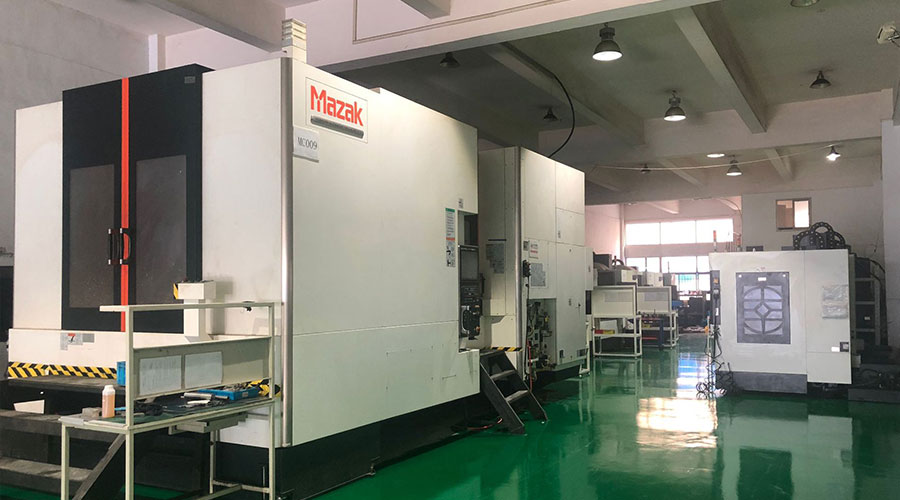 PTJ® provides a full range of Custom Precision cnc machining china services.ISO 9001:2015 &AS-9100 certified. 3, 4 and 5-axis rapid precision CNC machining services including milling, turning to customer specifications,Capable of metal & plastic machined parts with +/-0.005 mm tolerance.Secondary services include CNC and conventional grinding, drilling,die casting,sheet metal and stamping.Providing prototypes, full production runs, technical support and full inspection.Serves the automotive, aerospace, mold&fixture,led lighting,medical,bicycle, and consumer electronics industries. On-time delivery.Tell us a little about your project's budget and expected delivery time. We will strategize with you to provide the most cost-effective services to help you reach your target,Welcome to Contact us ( [email protected] ) directly for your new project.
PTJ® provides a full range of Custom Precision cnc machining china services.ISO 9001:2015 &AS-9100 certified. 3, 4 and 5-axis rapid precision CNC machining services including milling, turning to customer specifications,Capable of metal & plastic machined parts with +/-0.005 mm tolerance.Secondary services include CNC and conventional grinding, drilling,die casting,sheet metal and stamping.Providing prototypes, full production runs, technical support and full inspection.Serves the automotive, aerospace, mold&fixture,led lighting,medical,bicycle, and consumer electronics industries. On-time delivery.Tell us a little about your project's budget and expected delivery time. We will strategize with you to provide the most cost-effective services to help you reach your target,Welcome to Contact us ( [email protected] ) directly for your new project.
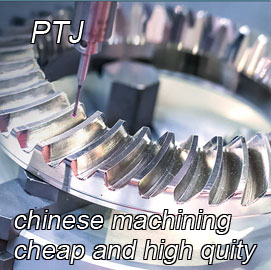
- 5 Axis Machining
- Cnc Milling
- Cnc Turning
- Machining Industries
- Machining Process
- Surface Treatment
- Metal Machining
- Plastic Machining
- Powder Metallurgy Mold
- Die Casting
- Parts Gallery
- Auto Metal Parts
- Machinery Parts
- LED Heatsink
- Building Parts
- Mobile Parts
- Medical Parts
- Electronic Parts
- Tailored Machining
- Bicycle Parts
- Aluminum Machining
- Titanium Machining
- Stainless Steel Machining
- Copper Machining
- Brass Machining
- Super Alloy Machining
- Peek Machining
- UHMW Machining
- Unilate Machining
- PA6 Machining
- PPS Machining
- Teflon Machining
- Inconel Machining
- Tool Steel Machining
- More Material

